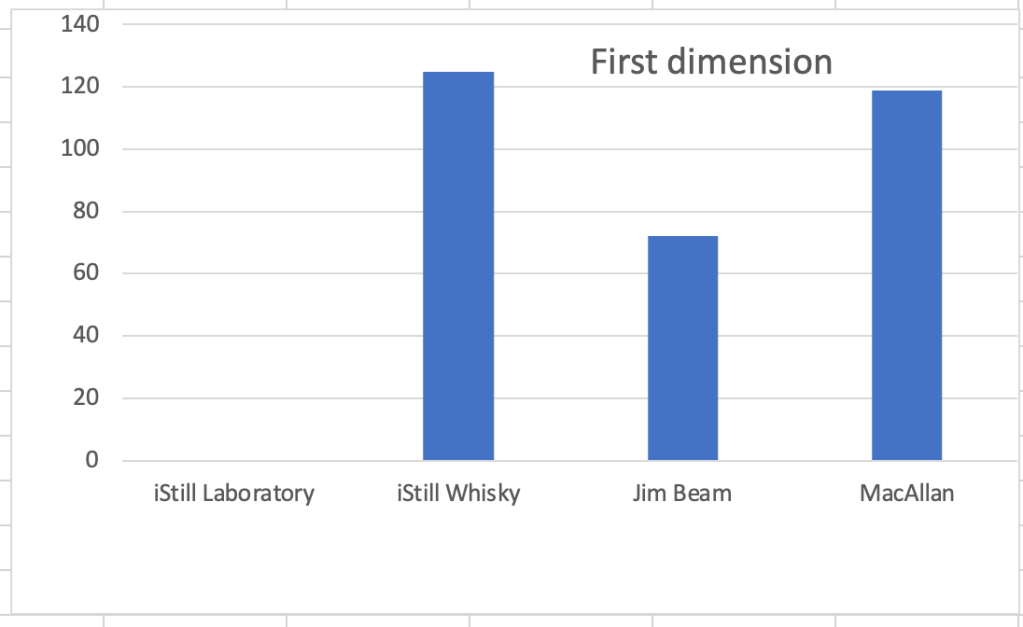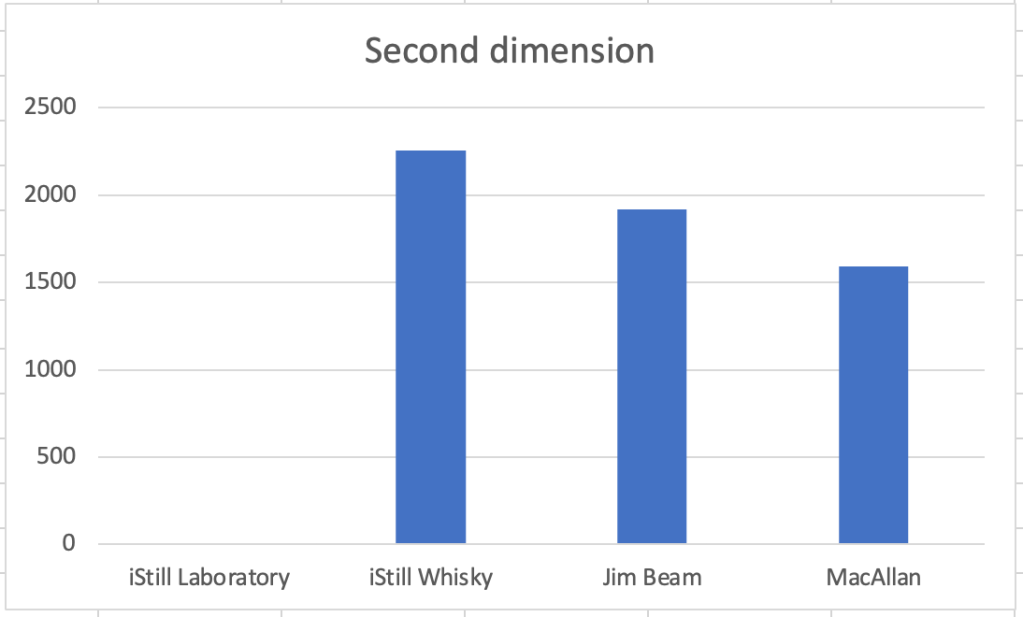Laboratory Verdict: iStill Whisky ...
Introduction
Today, we present more laboratory findings. We compare a craft distilled whisky, made on an iStill, to the world's most popular Bourbon, Jim Beam, and to the so-called "Rolls Royce of single malts", aka MacAllan's. Jim Beam is made on an industrial level, using continuous distillation, and bubble-cap technology. The MacAllan is batch produced, double distilled, and uses traditional copper potstills. The craft distilled whisky is small batch (2000 liter boiler capacity), is distilled 1.5 times in potstill style, and uses iStill's modern hybrid distillation technology.
Even though this comparison could be about industry size, applied technology, and distillation procedure, we think there is a more important question to ask. Here it is: does whisky produced on an iStill outperform Big Alcohol's most sold Bourbon and Big Alcohol's most sought after single malt whisky?
In general, craft distilled spirits are more expensive to produce than big batch or industrial scale whiskies. For craft distillers to become successful, they need to make up for that by delivering on taste. A more tasteful and flavorful product compensates for the higher production price.
Again, as in the "Laboratory Verdict"-post from last week, we'll use Odin's Holy Trinity of Distillation Theory to make predictions of what to expect. Then we'll present the outcomes of the laboratory study and confront these with the predictions. Finally, we'll draw some conclusions for craft distillers to learn from. Advance notice & warning: you might just learn how to make the best whisky in the world.
Predictions
The laboratory researches and compares the three whiskies on four categories:
- First dimensional, front-end intensity: fruity flavors;
- Second dimensional, middle-of-mouth intensity: grain flavors;
- Third dimensional, back-of-mouth intensity: rooty and nutty flavors;
- Maturation: is the spirit of age yet, or does it need more time to further develop and mellow out?
As the Jim Beam is a Bourbon, a whiskey with a first and second dimension only, we expect well-defined fruity and grain flavors, but no rooty and nutty flavors. The bubble-cap technology prevents any back-end smearing. Jim Beam is aged for 4 years, limiting the amount of heads smearing they can add. This Bourbon is fermented and distilled on the grain, which should boost the second dimensional grain flavors.
The MacAllan is aged for 12 years. This prolonged maturation time allows for more heads and tails smearing to be added to the hearts cut, as there is more time for them to mellow out into interesting front-end and back-end flavors. We expect the middle-of-mouth experience to be somewhat lacking, as MacAllan is not fermented nor distilled on the grain. Also, they use a short fermentation time, that hampers taste formation. Finally, chill filtration will eat away at the "size" of the third dimension.
The iStill whisky is fermented and distilled on the grain, and should therefore have an impressive second dimension. The modern process controls should result in an impressive first dimension. As the iStill combines a 1.5 distillation approach with direct heating, the Maillard Reaction is expected to give an impressive back-end, third dimensional flavor. The iStill whisky is only 3 1/2 years old and needs many more years of maturation.
First dimension: fruity flavors

The iStill whisky has the most fruity flavors, followed closely by the MacAllan. Jim Beam has significantly less of a first dimension, which is the result of their relatively short maturation period of 4 years. Both, the MacAllan and iStill whiskies can allow for more heads smearing as these products (are expected to) mature longer. Longer maturation turns a larger heads smearing into more interesting and complex flavors. Jim Beam, with the shorter maturation, simply needs to be more careful here.
Second dimension: grain flavors

iStill whisky has the most grain flavors, followed by Jim Beam. The MacAllan lacks here, because it does not ferment on the grain, does not distill on the grain, and uses relatively short fermentation times, that hamper flavor development. iStill delivers more grain flavors than Jim Beam because of a longer fermentation time and the lower total number of distillations, that leads to less flavor dilution.
Third dimension: rooty & nutty flavors

The iStill whisky's back-end flavors benefit from the Maillard Reaction that results from its its unique 1.5 distillation protocol in combination with direct heating and on-the-grain distillation. It delivers a category-shattering record third dimension that is 5x bigger than MacAllen.
The Scottish single malt suffers, not just from a lack of tails smearing, but also from the chill filtration they apply. Chill filtration takes away a lot of the third dimension flavors, but allows the whisky to be bottled at lower strength, thus creating more product. Dilution of flavor and strength to sell more bottles? Doesn't sound very "Rolls-Royce" to us.
The Jim Beam Bourbon, true to its category, and because of the use of bubble-cap trays, has no third dimension. The lack of the heavy hitting rooty and nutty flavors, allow the fruitiness of the Jim Beam, even with a smaller heads smearing, to shine through.
Maturation

The MacAllan 12 y.o. is fully matured. In fact, it might have benefitted from a little more tails smearing and/or less chill filtration. More tails smearing would take advantage of the long maturation period by creating a more interesting single malt whisky. The Jim Beam Bourbon is well-matured, but could benefit from a few additional months or maturation. The iStill whisky is still very young and will only be fully matured at 8 y.o., so in about four years from now. During the next four years, as the iStill whisky matures, more first, second, and third dimension flavors will be created, further extending its already impressive lead in flavor.
Conclusions
The most important question we wanted to answer today, was this one: can whisky made with an iStill outperform Big Alcohol's most sold Bourbon and its most sought after single malt whisky?
Based on the laboratory results, presented above, we can now answer that question with confidence:
- Craft distillers can make more flavorful whisky than Big Alcohol;
- When they use iStill technology, training, and procedures.
The science concludes that iStill produced, craft distilled whisky outperforms the most sold Bourbon and most revered single malt whisky. With just 4 additional years of maturation, the iStill whisky will most probably be the best in the world.
Now, what does that mean for the global whisky industry? We think that it means that, within a decade from now, iStillers will be making the best whiskies in the world. All over the world.
Do you want to learn how to make the best whisky in the world? Reach out to Veronika@iStillmail.com for more information on our courses. Do you want more information on our amazing stills, mashers, and fermenters? The machines that allow for ultimate process and flavor control? Please contact Esther@iStillmail.com. Do you want us to analyse your vodka, whisky, or rum, and come back with advise? Please order our laboratory services with Robert@iStillmail.com.
Backing it up with science ...

www.iStill.com
Reactions
Add your comment
All reactions ()
Loading comments..